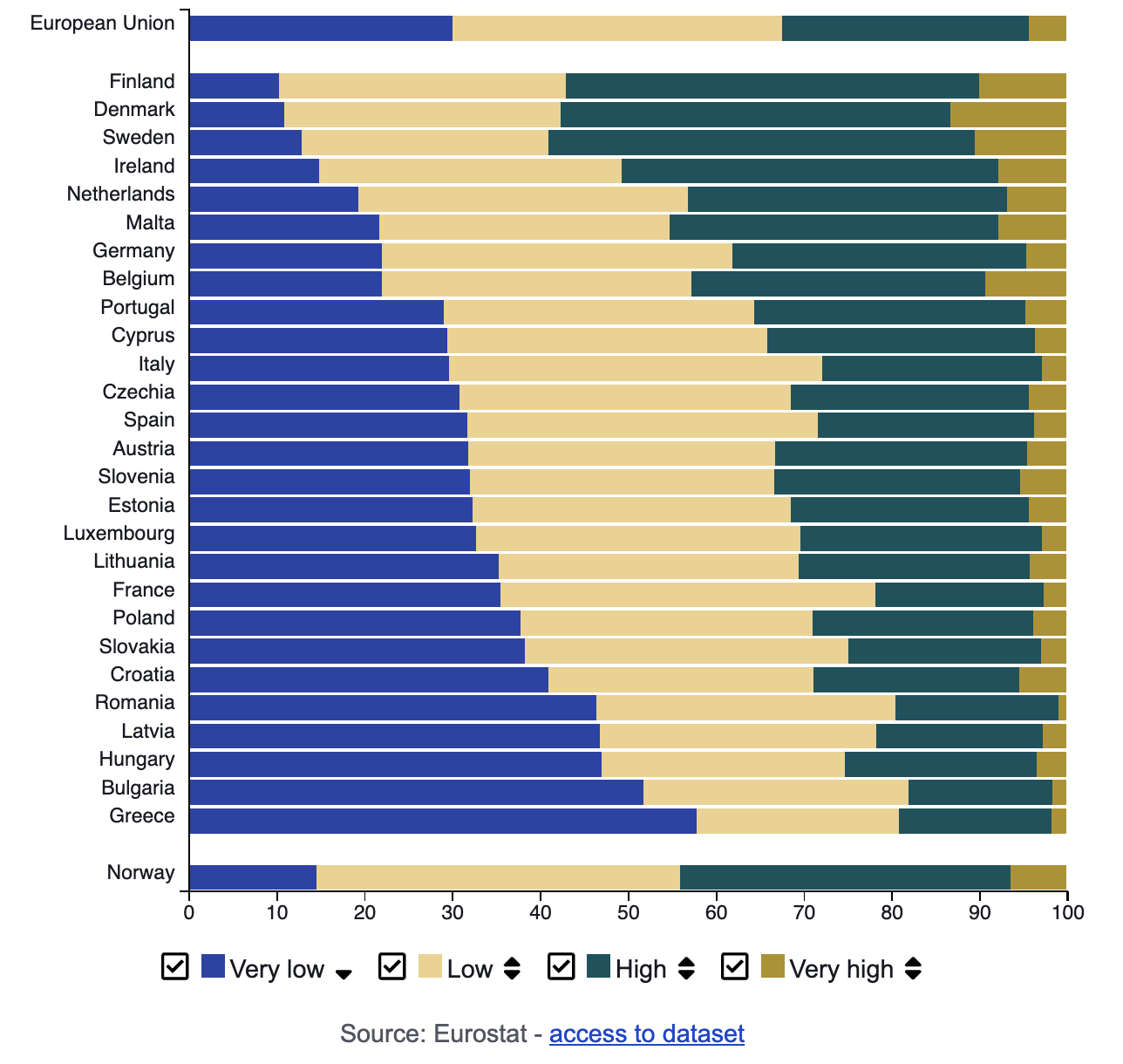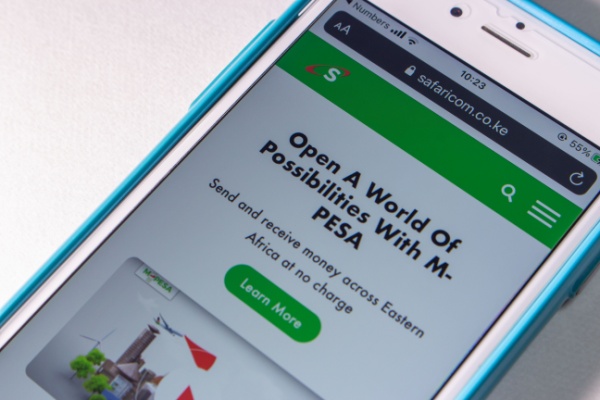Bridging the Digital Divide
Inclusive Strategies for Global Reach
Addressing the challenge of reaching audiences in regions with varying levels of digital access. Discussing inclusive strategies that ensure marketing efforts are equitable and effective, regardless of the digital landscape.
I started my digital career in 1999. In a sentimental mood, I was looking back to the exiting times when new changes were conquering the world. The first quarter of this century has already shown a rapidly digitizing world, the promise of global connectivity, just one click away. Excitement, growth, new developments and success with companies like Amazon, or e-Bay. But it also came with failures, disappointments. Who remembers AltaVista? Or Netscape? Or World Online?
Then my thoughts wandered towards the future. How exciting it looks again with the upcoming use of AI. But I also thought about the people around me. Can they keep up with the even more rapid changes from nowadays? What effect will it have on them?
I’m living my life in a digital surrounding, a digitized bubble. My colleagues, my friends, are using digital in their work and in their daily lives. They are living the digital revolution. These people are not only the young generation. Even my 92-year-old neighbour is using her smartphone for banking, talking to her GP and ordering her groceries online, so she can live independently. She is managing perfectly well in this digital world. But on the other hand, I see others struggling to keep up with the speed of all the changes.
For many people, this digital revolution remains unreachable. The digital divide—a term that describes the gap between those with easy access to digital technology and those without—poses a significant challenge for businesses aiming for international growth.
Bridging this divide requires more than just technological solutions and some education; it necessitates a profound understanding of diverse human behaviours, cultural sensitivities, and innovative, inclusive strategies.
In this article, I try to delve into how we can leverage a human-centered approach, combined with data-driven strategies enhanced by AI. This will not only bridge the digital divide, but also ensure that our marketing efforts are equitable and effective, regardless of the digital landscape.

Understanding the Digital Divide
Before I can address this topic, we need to understand its dimensions. The digital divide is not merely about having or not having internet access; it’s also about the quality of that access, digital literacy, and how different cultures use technology.
For businesses and organizations, this means recognizing that strategies that work in one region may not be effective—or even accessible—in another.
Quality of Access
The first issue to address is the quality of access to the Internet. Optimizing your website for regions with low speed bandwidth and using a CDN solution should be a first step to reach people in low bandwidth regions. Companies like Facebook and Google have developed “Lite”-versions of their apps. These versions are optimized for these low-bandwidth environments, ensuring that users with limited or slow internet connections can still access their services. If you are targeting these low band-with regions, you would not be very successful with a shiny, heavy website, which takes ages to load.
But also in regions with a high-speed internet, might not have access to it. People might not be able to afford a high-speed Internet service, or they might live in a more rural area, where there are white spots with limited access.
Digital Literacy
Illiteracy and data illiteracy can have a profound negative effect on the digital divide. Some tech companies have initiated programs aimed at improving digital literacy in underserved communities. For instance, Microsoft’s Digital Literacy Curriculum is designed to help people learn the essential skills to use computers and the internet effectively. These initiatives acknowledge that providing access to technology is only part of the solution; empowering individuals with the knowledge to use technology effectively is crucial for bridging the digital divide.
But also in countries with a high density of digitization, low digital literacy can still be a problem and not only in the group of the elderly citizens.
Part of creating an inclusive strategy involves investing in the communities you want to reach. This could mean supporting initiatives that improve internet access and digital literacy, making it easier for potential customers to engage with the digital world. Partnerships with local organizations can amplify these efforts, ensuring they are culturally sensitive and impactful. And do not be fooled. People active on Facebook, TikTok or Instagram, might look very digitized, but if they cannot access their digitized government, or access digital paying services, or otherwise participate in a digitized society, in fact, they are still partly digital illiterate.
Shared Mobile Devices
We often look upon a smartphone as a highly personal device, yet sharing is more common than you would think. We see this around us daily, parents sharing their phone with their small children to watch a video or play games to keep them busy.
In many rural areas of developing countries, a single smartphone may serve an entire household or even extended family members. This communal use of technology, while resourceful, presents unique challenges and opportunities for digital marketers.
Marketers aiming to engage these diverse users need to consider content that appeals across age groups and usage patterns, possibly offering multipurpose apps or platforms that cater to the whole family’s needs. But it also comes with a responsibility of age sensitive ads.

Digital divide in B2B
As a B2B company, you also should consider data literacy. The level of digitization is varying across the globe. As an example, you could look at the Eurostat data on digitization in Europe. Although the level of digitization of both citizens and businesses is increasing, there is still a large difference in digitization in businesses between countries like Finland or Denmark, which are highly digitized. On the other side of the scale, you’ll find countries like Greece and Bulgaria. But did you expect that the majority of companies in France to be very low and low digitized?

Digital intensity level in businesses, 2022
This digitization gap can influence your international business efforts. I still see companies not responding to a request a quote form, coming from a Gmail account. And no, I do not mean responding to all the spam that is coming from Gmail-addresses. Who doesn’t know Eric Jones in our spam boxes, trying to sell SEO services multiple times a day. And yes, there is also scam out there. I mean legitimate, serious leads being ignored.
In some regions, people are proud of using a Gmail account. They find it more important, serious, more prestigious than using their own business e-mail address. Companies who are not on a digital high horse and understand this, and do respond to these leads, might find serious business opportunities, sometimes with multimillion deals as a result. Of course, the normal cautions apply when doing business, but with or without a business email address or a Gmail address, you always should do your homework and check trustworthiness. You could do this at your embassy.

Inclusive Strategies for Global Reach
How can you, as a business or organization, adapt your digital marketing strategy towards this broad range of people, all on different levels within the digital divide?
Localize your Content and provide Multilingual Support
At the heart of any strategy aiming to bridge the digital divide is the recognition of cultural diversity. Content should not only be translated but localized to fit cultural contexts, ensuring it resonates with the target audience’s values, norms, and experiences. Use localized images to enhance the information. Moreover, providing multilingual support can dramatically improve accessibility and user experience for non-English speakers.
If this is not feasible for your business to localize for all countries, consider this at least for your main target countries.
Mobile-First Approach
In many regions, mobile phones are more common than computers. Adopting a mobile-first approach ensures that your digital content is accessible to a wider audience. This includes optimizing websites for mobile use and considering mobile applications that can provide offline services or require minimal data usage. Not everyone has an “unlimited” data bundle.
Data-Driven Insights with a Human Touch
Incorporating AI and analytics to gather insights about your audience is crucial. However, this data should be analysed with a human touch, considering the cultural and socio-economic contexts that influence digital behaviour. This approach ensures that strategies are not only informed based on digital data, but are also based on empathetic and culturally sensitive information. Besides the cultural influence, analysing the data should consider the level of data literacy as an issue to consider, without becoming patronizing. The people who translate the data into insights, should emphasize with the people visiting the website, without putting patronizing labels or persona’s on them. Not every person above the age of 65 is data illiterate, and yet if I meet student marketeers showing me the personas they are using, which are so stereotype, it almost becomes comedy. So Stop Stereotyping. Look at behaviour without a personal opinion, and be aware of your bias.
Engagement Through Local Influencers
Collaborating with local influencers can help bridge the cultural and digital divide. These individuals understand their communities deeply and can communicate your brand’s message in a way that’s authentic and engaging. It’s a powerful way to build trust and credibility in new markets.
This might not be feasible for a B2B company. Here you can use fairs or become a member of local networks. For smaller companies, This might be challenging. But working with a local trade agent might make this easier.
Wrap-up
Bridging the digital divide requires a shift from a global one-size-fits-all marketing strategy to a more nuanced, inclusive approach. By embracing a model that integrates human insights with data analytics, and respecting cultural nuances, businesses can develop marketing strategies that are not only profitable but also powerfully effective across diverse digital landscapes. The path to global connectivity is complex, but with a commitment to understanding and addressing the unique challenges faced by different communities, we can create a more inclusive digital world.
This approach doesn’t just promise broader reach—it also offers the potential for deeper, more meaningful connections with audiences around the globe. By building strategies that are as inclusive as they are innovative, we not only bridge the digital divide; we also pave the way for a future where digital empowerment becomes reality.
Example: Mobile Banking in African Communities
In some African communities, where individual ownership of smartphones is still relatively low, mobile phones often serve as communal tools for accessing digital services, including mobile banking and payments. This communal approach to digital device usage has led to the rise of mobile money services like M-Pesa, which are tailored to function on basic mobile phones without the need for internet access. Such services have revolutionized financial inclusion, allowing multiple users to conduct financial transactions through a single device, proving that understanding local contexts and usage patterns can lead to innovative solutions that address the digital divide.
*M-Pesa works with a SIM-card.


Is Your Online Marketing Export Proof?
Now, dear reader, we turn the page to your digital tale. Have you, perhaps, stumbled upon problems where you missed opportunities due to the digital divide? Do you want to know where you can improve your digital marketing? Whether you need an audit or just want to discuss your digital marketing challenges, schedule a free call.
